#azamor
Text
Respiratory distress in SARS-CoV-2 exposed uninfected neonates followed in the COVID Outcomes in Mother-Infant Pairs (COMP) Study
Top 5 Takeaways
High Rates of Respiratory Distress in Exposed Uninfected Neonates: The study found unusually high rates (17%) of respiratory distress (RD) in SARS-CoV-2 exposed uninfected (SEU) term neonates.
Maternal COVID-19 Vaccination Reduces Neonatal RD: Maternal vaccination against COVID-19 significantly reduced the frequency of neonatal RD, with a 67% decline in the odds of RD in neonates born to vaccinated mothers compared to those born to unvaccinated mothers.
Proteomic Analysis Reveals Inflammatory Response: Proteomic analysis indicated a robust inflammatory response in SEU neonates with RD, involving pathways like ciliary dysregulation and enhanced IgE production.
Demographic and Clinical Factors: The study enrolled 221 pregnant persons with COVID-19 and 227 exposed fetuses. It highlighted the correlation of RD with factors like maternal disease severity, prematurity, and the absence of maternal COVID-19 immunization.
Th2-Skewed Immune Response in SEU Neonates: SEU preterm infants with RD showed a Th2-skewed immune response, indicated by elevated levels of certain cytokines and the inhibition of FC gamma receptors.
Original Article Author and Citation
Olivia M. Man, Tamiris Azamor, Mary Catherine Cambou, Trevon L. Fuller, Tara Kerin, Sophia G. Paiola, Jessica S. Cranston, Thalia Mok, Rashmi Rao, Weiqiang Chen, Jae U. Jung, Viviana Fajardo Martinez, Suan-Sin Foo, Karin Nielsen-Saines
Suggested Citation
https://doi.org/10.1038/s41467-023-44549-5
Summary
The study aimed to understand the impact of prenatal COVID-19 exposure on neonatal respiratory distress (RD). A high incidence of RD was observed in SEU neonates, and maternal vaccination notably reduced this risk. Proteomic analysis suggested a strong inflammatory response in these neonates.
Methods
The research employed a longitudinal cohort study approach, enrolling mothers with confirmed SARS-CoV-2 during pregnancy and their exposed fetuses. Various demographic, clinical, and proteomic analyses were used to understand the complex relationship between maternal COVID-19 parameters and infant RD.
Discussion
The findings highlight the protective role of maternal COVID-19 vaccination in reducing neonatal RD. The study also revealed a Th2-skewed immune response in SEU neonates with RD, suggesting potential long-term implications, including the development of allergic processes and pulmonary fibrosis.
Conclusion
Maternal vaccination against COVID-19 significantly decreases the risk of neonatal RD in SEU infants. The study underscores the importance of maternal vaccination for reducing neonatal morbidity and improving long-term infant health.
43 notes
·
View notes
Text
Hand power
"Open your heart to love, which extends in all directions, which encompasses all things, which reaches all creatures – love, alive by presence in all acts, by demonstration in all moments, by testimony in all attitudes , - and you will then feel the light of a dawn descend upon your soul that will be a remedy for all evils, and consolation for all despair and understanding for all pain."
#Maryflor#pazeequilibrio #espiritualidade#positividade
Bezerra de Menezes (Message written by Azamor Serrão in 1967)
34 notes
·
View notes
Photo
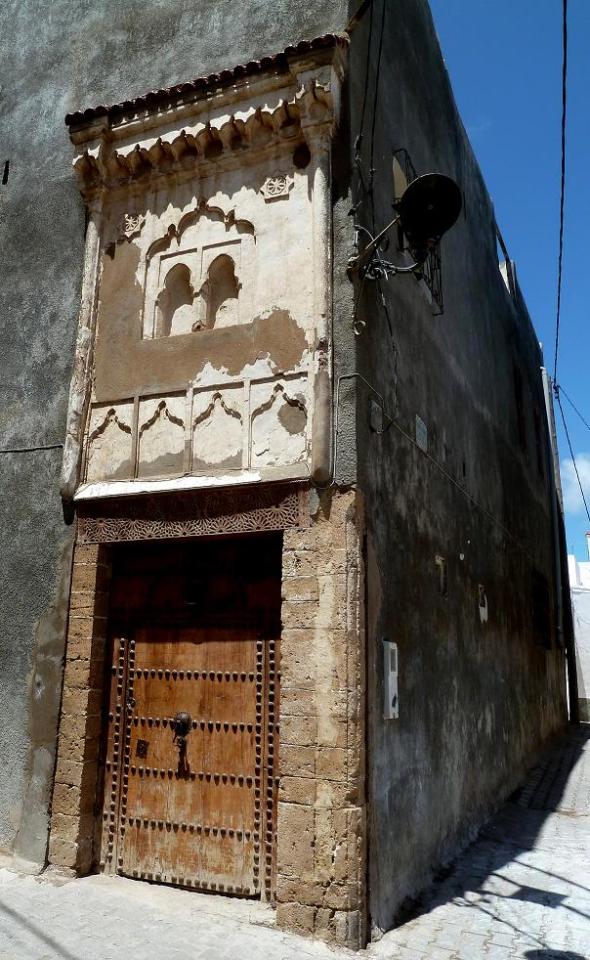
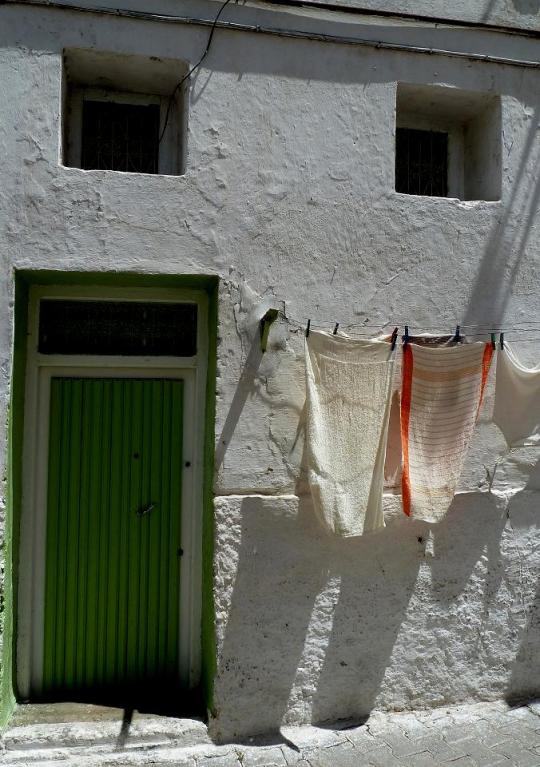
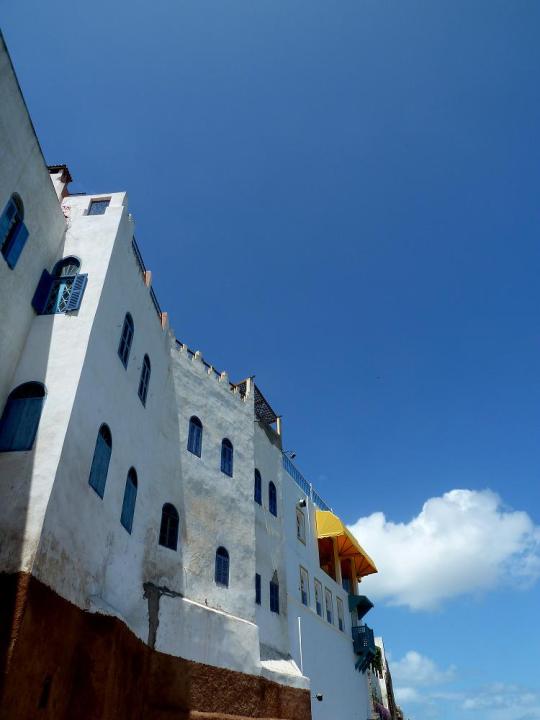
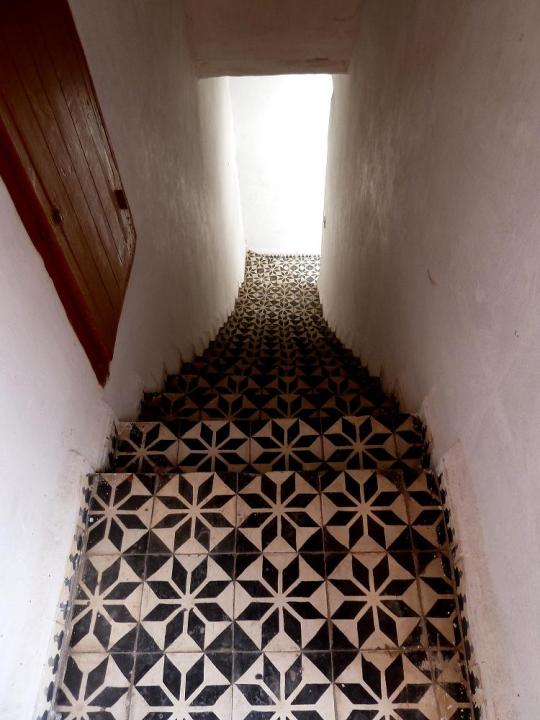




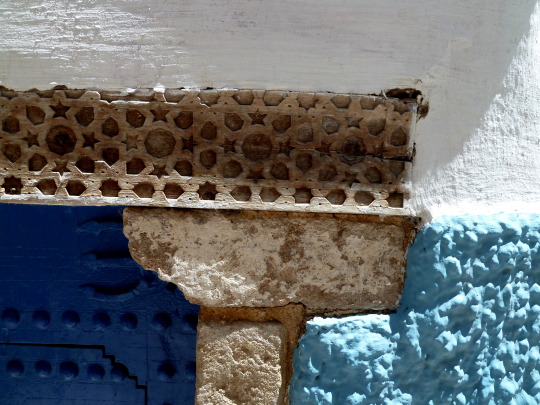

Beautiful Azamor
Morocco
photos cjmn
153 notes
·
View notes
Note
20, Queen Nehellenia ^-^

I am so sorry this took wayy too long! But here she is!! I hope it's to your liking 💖💖💖
42 notes
·
View notes
Text
Was tagged by @mobolanz. Thank you!!! ❤️🧡💛💚💙💜🖤
1. Nicknames: I have many nicknames, but to be honest, I prefer when people call me by my name. I don’t mind when people call me Aza though.
2. Zodiac sign: Pisces
3. Height: 1,67m
4. Hogwarts house: Ravenclaw
5. Last thing i googled: I was trying to find some store that sells ritual clothing lol
6. Favourite musicians: Lana Del Rey (of course) and Jhené Aiko
7. Song stuck in your head: Psilocybin - Jhené Aiko
8. Followers: About 500 I guess
9. Following: About 150
10: Do i get asks: Yes, but not as often as I would like
11. Amount of sleep hours: I have no idea lol
12. Lucky number: 1?
13. What are you wearing: Black pants, a blue coat with roses and purple socks
14. Dream job: Astrophysicist
15. Dream vacation: Maybe Japan...
16. Instruments: PIANO!!! also handpan
17. Language: My native language or a language that I like? Portuguese for the first one, German for the second (but I love Portuguese too... just for the record :P)
18. Favourite song: Uuuuuuuh [insert Lana Del Rey song here]
19. Random fact: I have aphantasia
20. Aesthetic: https://azamor.tumblr.com/tagged/ensaio
2 notes
·
View notes
Note
(Questions You Aren't Used To) 2, 14, 22, 38, 47 and 62 :)
2. On a scale of 1-5, how afraid of the dark are you?
2.5 … depends on the situation
14. What is your current desktop picture?

i really need to change that because it’s very cold even if it never snows in my country idon’t need this shoved in my face RN ngghghgnhngghghnnghgnhgnh
22. Do you have a secret talent? If yes, what is it?
i guess it’s singing… but have no intention to go and develop it to a level t’d feel akward my school already abused my drawing talent anyway :/
38. What is the color of your socks?
gray… fluffy gray
47. If you could ask your future self one question, what would it be?
ARE YOU STILL FORCED TO LIVE AROUND SHITTY PEOPLE WHO REGRESS YOU INTO SOME SUBMESSIVE AND SENSITVE PERSON THAT HAS NO CHANCE IN LIFE BECAUSEALMOST EVERY ROLE MODEL YOU HAD IS A HUGE HYPOCRITE ? I MUST KNOW. also did i ever find ACTUAL love, most important ,they are not like any of the people in my school but actully sweet and doesn’t think i’m weird and doesn’t force me to see myself as a bad person or tries to unequally change me and actaully respects me for who i am ???????????
62. What is your favorite letter of the alphabet?
mmmmmmmmmmmmmmmmmmmmmmmmmmmmmmmmmmmmmmmmmmmmmmmmmmmmmmmmmmmmmmmmm…… hard question
XD
3 notes
·
View notes
Text
Calle Azamor, 523 - Villa Fiorito


The Argentine government declared “National Historic Site ”to the historical living place of the family Diego Armando Maradona in the Buenos Aires neighborhood of Villa Fiorito, Lomas de Zamora, where the world football legend took his first steps. The announcement comes three days before his 61st birthday and just under a month after the first anniversary of his death.
The announcement was made through the Decree 733/2021 published this Wednesday in the Official Gazette with the signature of President Alberto Fernández; the Chief of Cabinet, Juan Manzur; and the Minister of Culture, Tristán Bauer. “Declare a National Historic Site to the Birthplace of Diego Armando Maradona, located at Calle Azamor No. 523 of the City of Villa Fiorito, Lomas de Zamora Party, Province of Buenos Aires,” says the text.
#diego armando maradona#Diego Maradona#Maradona#El Pibe de Oro#golden boy#El Pelusa#The Fuzz#El Barrilete Cosmico#The Cosmic Kite#El Diez#D10S#Calle Azamor#Villa Fiorito#National Historic Site#football#fussball#fußball#foot#fodbold#futbol#futebol#soccer#calcio
13 notes
·
View notes
Photo
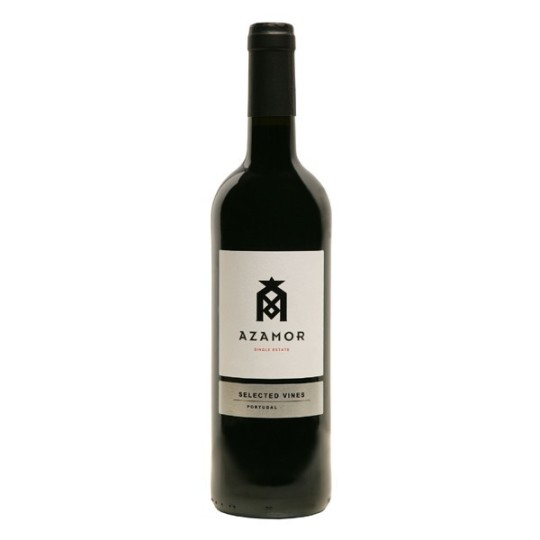
Azamor Selected Vines 2013 Rotweinhttps://weinportugalshop.de/tinto/5449-azamor-selected-vines-2013-rotwein-5600377611028.html
0 notes
Text
O urbanismo português nas Praças de Marrocos
O urbanismo português nas Praças de Marrocos
Uma rua em Arzila, no local do antigo Convento de S. Francisco
A marca da presença portuguesa nas cidades marroquinas não ficou apenas nos testemunhos edificados mais evidentes, nem tão pouco nas influências imateriais. O facto de os portugueses terem vivido nas estruturas urbanas pré-existentes, não se instalando em áreas criadas de raiz, obrigou não só à sua adaptação ao modo vida ocidental,…
View On WordPress
0 notes
Photo
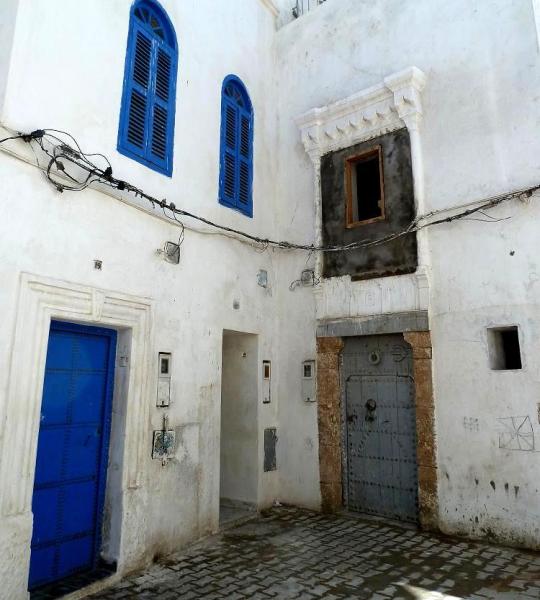

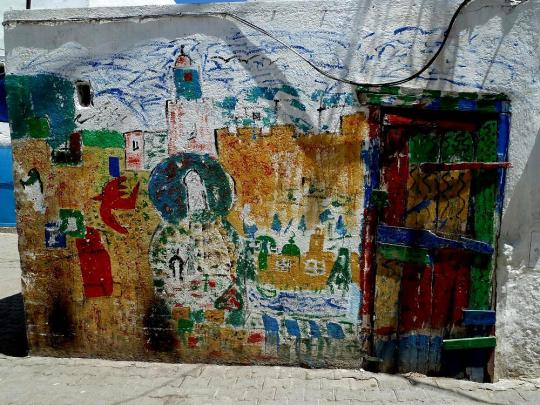

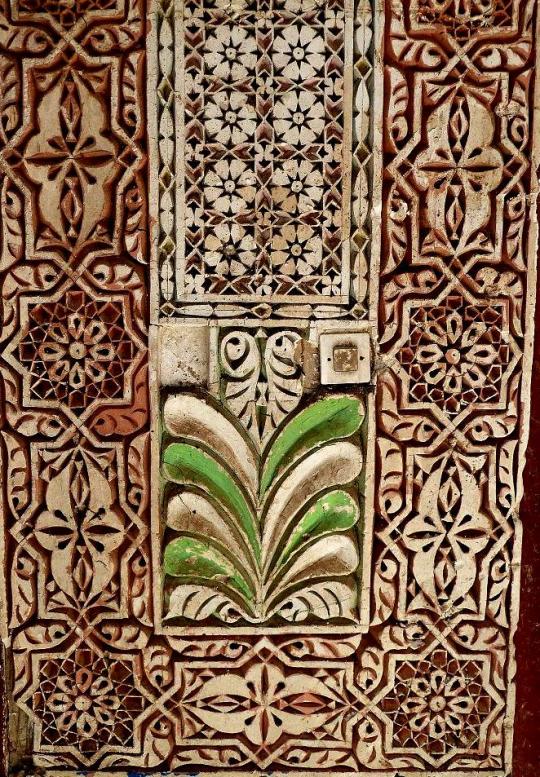

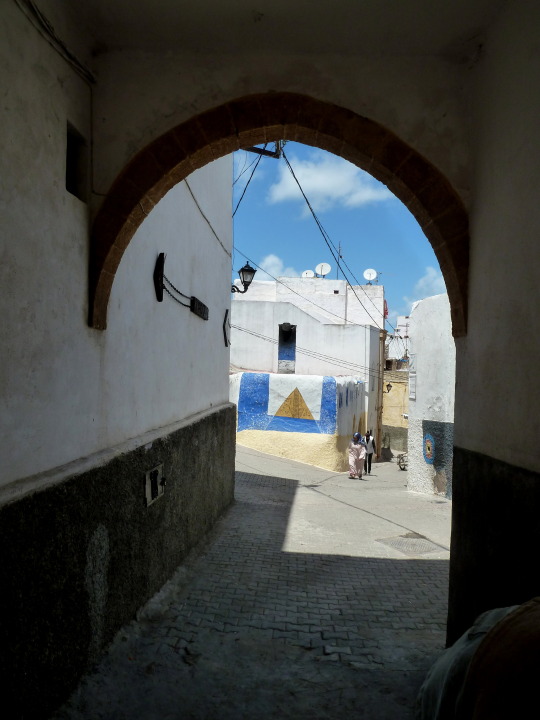
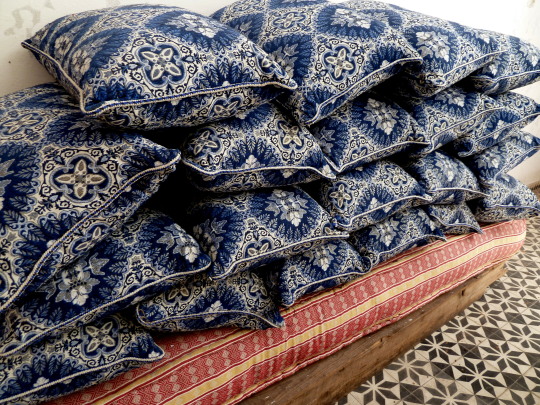
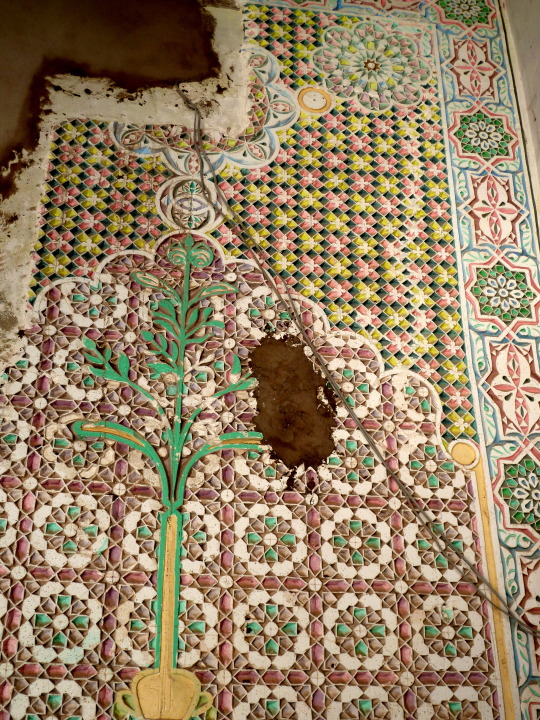

Streets of Azamor
Morocco
photos cjmn
164 notes
·
View notes
Text




google aesthetic tag
Rules: Google/Search your name + your favorite color + the word ‘aesthetic’. Take the first 4 (non collage) photos and viola you have your Aesthetic Mood Board! Then tag your friends and moots to join.
I was tagged by @angelwonho 💞 thank you so much, I really enjoyed this one.
Now I tag:
@redvelvt @equigay @eternityhwa @vanteslens @hyeoii @frozen-lunar @gayforpinks @kunfess @chestnutheadkyungsoo @brownvenus @noctariumn @astr0cult @pongerjas @never-losehopelove @mastermoons @analsunshinee @mydivinepunishment @jane-grey @fr2ky @etherealjjong @hyuckieberryfinn @nanou002 @tul-lip @paraphilics @srgntfucks @wayvkage @azamor @arsonist-in-my-pastime
33 notes
·
View notes
Text
Top 10 songs
Tagged by @mobolanz
Lana Del Rey - Art Deco
Jhené Aiko - Overstimulated
Jhené Aiko - Psilocybin
Lana Del Rey - Ultraviolence
Lana Del Rey - Brooklyn Baby
Lana Del Rey - 13 Beaches
Lana Del Rey - Cherry
Daft Punk - Something About Us
Daft Punk - Within
Tinashe - Cold Sweet
Thanks for tagging me!! 💖
#tag#azamor#yeah I really love Lana Del Rey#I would post the songs (and not only the name) like you did but I have no idea how to do that lol
1 note
·
View note
Note
👀, 😤, ⚡️, 🐬 and 🎀
what was the most recent vivid dream that you had?well, that on the last day of school i went with…NEVERMIND D:do you get angry easily?yeah… i guess..:/ if you had any superpower, what would it be and why?reading thoughts heheh :D if you could transform into any animal/magical creature, what would you be and why?probably mermaid what’s your fashion sense like?well, i never put that much of thoughts into it but i noticed it’s mainly pink/black themed
2 notes
·
View notes
Text
15th King of Portugal (6th of the Aviz Dynasty): King João III of Portugal, “The Pious/ The Colonizer”

Reign: 13 December 1521 – 11 June 1557
Acclamation: 19 December 1521
Predecessor: Manuel I
John III (7 June 1502 in Lisbon – 11 June 1557 in Lisbon) nicknamed The Colonizer ("o Colonizador") was the King of Portugal and the Algarves from 13 December 1521 to 11 June 1557. He was the son of King Manuel I and Maria of Aragon, the third daughter of King Fernando II of Aragon and Queen Isabel I of Castile. João succeeded his father in 1521, at the age of nineteen.
During his rule, Portuguese possessions were extended in Asia and in the New World through the Portuguese colonization of Brazil. João III's policy of reinforcing Portugal's bases in India (such as Goa) secured Portugal's monopoly over the spice trade of cloves and nutmeg from the Maluku Islands, as a result of which João III has been called the "Grocer King". On the eve of his death in 1557, the Portuguese empire had a global dimension and spanned almost 1 billion acres (about 4 million square kilometers).
During his reign, the Portuguese became the first Europeans to make contact with both China, under the Ming dynasty, and Japan, during the Muromachi period. He abandoned Muslim territories in North Africa in favor of trade with India and investment in Brazil. In Europe, he improved relations with the Baltic region and the Rhineland, hoping that this would bolster Portuguese trade.

João, the eldest son of King Manuel I to his second wife Maria of Aragon, was born in Lisbon on 7 June 1502. The event was marked by the presentation of Gil Vicente's Visitation Play or the Monologue of the Cowherd (Auto da Visitação ou Monólogo do Vaqueiro) in the queen's chamber.
The young prince was sworn heir to the throne in 1503, the year his youngest sister, Isabel of Portugal, Empress Consort of the Holy Roman Empire between 1527 and 1538, was born.
João was educated by notable scholars of the time, including the astrologer Tomás de Torres, Diogo de Ortiz, Bishop of Viseu, and Luís Teixeira Lobo, one of the first Portuguese Renaissance humanists, rector of the University of Siena (1476) and Professor of Law at Ferrara (1502).
João's chronicler António de Castilho said that, "Dom João III faced problems easily, complementing his lack of culture with a practice formation that he always showed during his reign" (Elogio d'el rei D. João de Portugal, terceiro, do nome). In 1514, he was given his own house, and a few years later began to help his father in administrative duties.

At the age of sixteen, João was chosen to marry his first cousin, the 20-year-old Leonor of Austria,

eldest daughter of Philip the Handsome of Austria-Burgundy

and Queen Joana of Castile,
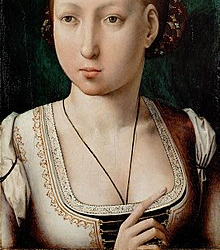
but instead she married his widowed father Manuel. João took deep offence at this: his chroniclers say he became melancholic and was never quite the same. Some historians also argue this was one of the main reasons that João later became fervently religious, giving him name the Pious (o Piedoso).
On 19 December 1521, João was crowned king in the Church of São Domingos in Lisbon, beginning a thirty-six-year reign characterized by extensive activity in internal and overseas politics, especially in relations with other major European states. João III continued the absolutist politics of his predecessors. He called the Portuguese Cortes only three times and at great intervals: 1525 in Torres Novas, 1535 in Évora and 1544 in Almeirim. During the early part of his reign, he also tried to restructure administrative and judicial life in his realm.
The marriage of João's sister Isabel of Portugal to Holy Roman Emperor Charles V,
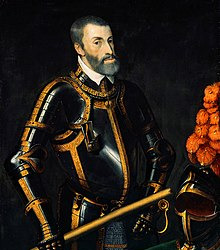
enabled the Portuguese king to forge a stronger alliance with Spain and the Holy Roman Empire. To strengthen his ties with Austria, he married his maternal first cousin Catherine of Austria, younger sister of Charles V and his erstwhile fiancée Leonor, in the town of Crato. João III had nine children from that marriage, but most of them died young. By the time of João's death, only his grandson Sebastião was alive to inherit the crown.
The large and far-flung Portuguese Empire was difficult and expensive to administer and was burdened with huge external debt and trade deficits. Portugal's Indian and Far Eastern interests grew increasingly chaotic under the poor administration of ambitious governors. João III responded with new appointments that proved troubled and short-lived: in some cases, the new governors even had to fight their predecessors to take up their appointments. The resulting failures in administration brought on a gradual decline of the Portuguese trade monopoly. In consideration of the challenging military situation faced by Portuguese forces worldwide, João III declared every male subject between 20 and 65 years old recruitable for military service on 7 August 1549.
Among João III's many colonial governors in Asia were Vasco da Gama,

Pedro Mascarenhas,

Lopo Vaz de Sampaio,

Nuno da Cunha,

Estêvão da Gama,

Martim Afonso de Sousa,

João de Castro

and Henrique de Meneses. Overseas, the Empire was threatened by the Ottoman Empire in both the Indian Ocean and North Africa, causing Portugal to increase spending on defense and fortifications. Meanwhile, in the Atlantic, where Portuguese ships already had to withstand constant attacks of Privateers, an initial settlement of French colonists in Brazil created yet another "front". The French made alliances with native South Americans against the Portuguese and military and political interventions were used. Eventually they were forced out, but not until 1565.
In the first years of João III's reign, explorations in the Far East continued, and the Portuguese reached China and Japan; however, these accomplishments were offset by pressure from a strengthening Ottoman Empire under Suleiman the Magnificent,
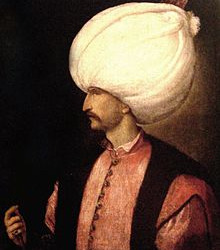
especially in India, where attacks became more frequent. The expense of defending Indian interests was huge. To pay for it, João III abandoned a number of strongholds in North Africa: Safim, Azamor, Alcácer Ceguer and Arzila.
João III achieved an important political victory in securing the control of the Maluku Islands, the "Spice Islands" claimed by Spain since the Magellan-Elcano circumnavigation. After almost a decade of skirmishes in Southeast Asia, he signed the Treaty of Zaragoza with Emperor Charles V on 22 April 1529. It defined the areas of Spanish and Portuguese influence in Asia and established the anti-meridian to the Treaty of Tordesillas.
The reign of João III was marked by active diplomacy. With Spain, he made alliances through marriage that ensured peace in the Iberian Peninsula for a number of years. He himself married Catherine of Austria, the daughter of Philip I of Castile. His sister Isabel of Portugal married Charles V, the king of Spain and Holy Roman Emperor. His daughter Maria Manuela

married King Felipe II of Spain

– and there were others. However, the intermarriage of these closely related royal families may have been one of the factors that contributed to the poor health of João's children and of future King Sebastião of Portugal.
João III remained neutral during the war between France and Spain but stood firm in fighting the attacks of French privateers.
He strengthened relations with the Papal States by introducing the Inquisition in Portugal and the adhesion of the Portuguese clergy to the Counter-Reformation. This relationship with the Catholic Church made it possible for João to name whomever he desired to important religious positions in Portugal: his brothers Henrique and Afonso
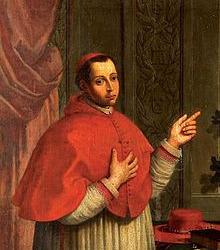
were made Cardinals, and his biological son, Duarte; was made Archbishop of Braga.
Commercial relations were intensified with England, the countries of the Baltic regions and Flanders during João III's reign. Meanwhile, at the other end of the world, Portugal was the first European nation to make contact with Japan. In China, Macau was offered to the Portuguese, and soon Portugal controlled major trade routes in the area. In South Asia, the Portuguese continued its hostile stance against their Muslim rivals and insurgent Indian leaders.
João III's support for the humanist cause was significant. In literature, his active support of Gil Vicente,

Garcia de Resende,

Sá de Miranda,

Bernardim Ribeiro,

Fernão Mendes Pinto,

João de Barros
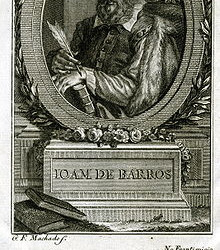
and Luís de Camões
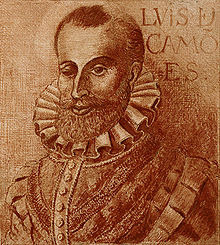
was notable. In the sciences, João III supported the mathematician Pedro Nunes
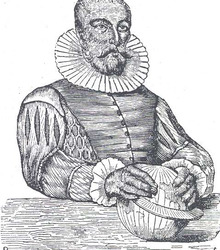
and the physician Garcia de Orta.

Through his links to Portuguese humanists such as Luís Teixeira Lobo, Erasmus dedicated his Chrysostomi Lucubrationes to João III of Portugal in 1527.
The monarch awarded many scholarships to universities abroad, mainly in the University of Paris, where fifty Portuguese students were sent to the Collège Sainte-Barbe headed by Diogo de Gouveia. He definitively transferred the Portuguese university from Lisbon to Coimbra in 1537.

In 1542 João III created in Coimbra a College of Arts (Liberal arts) for which he quickly recalled the many prominent Portuguese and European teachers headed by André de Gouveia at the College of Guienne in Bordeaux. Those included George Buchanan,

Diogo de Teive, Jerónimo Osório, Nicolas de Grouchy, Guillaume Guérante and Élie Vinet, who were decisive for the dissemination of the contemporary research of Pedro Nunes. The king provided the university with excellent resources. However, the importance of the College was shadowed by rivalry between the orthodox views of the "Parisians" group headed by Diogo de Gouveia and the more secular views of the "Bordeaux" school headed by his nephew André de Gouveia, within the advent of the Counter-Reformation and the influence of the Society of Jesus. The Society of Jesus founded colleges and made education more widely available.
Another noteworthy aspect of João III's rule was the support he gave to missionaries in the New World, Asia and Africa. In 1540, after successive appeals to Pope Paul III asking for missionaries for the Portuguese East Indies under the "Padroado" agreement, João III appointed Francis Xavier to take charge as Apostolic Nuncio. He had been enthusiastically endorsed by Diogo de Gouveia, his teacher at the Collège Sainte-Barbe, and advised the king to draw the youngsters of the newly formed Society of Jesus.The Jesuits were particularly important for mediating Portuguese relations with native peoples.
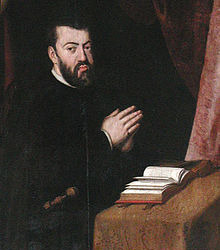
The Inquisition was introduced into Portugal in 1536. As in Spain, the Inquisition was placed under the authority of the king.
The Grand Inquisitor, or General Inquisitor, was named by the Pope after being nominated by the king, and he always came from within the royal family. The Grand Inquisitor would later nominate other inquisitors. In Portugal, the first Grand Inquisitor was Cardinal Henrique the king's brother (who would later himself become king).
There were Courts of the Inquisition in Lisbon, Coimbra and Évora and, from 1560 onwards, in Goa. The Goa Inquisition changed the demographics of Goa considerably. Goa was called the "Lisbon of the Far East" and trade reached a new level.
The Portuguese did not leave Goa undeveloped, rather they introduced modern architecture and built strong roads and bridges that have stood the test of time even till today.
The activities of the Inquisition extended to book censorship, repression and trial for divination, witchcraft and bigamy, as well as the prosecution of sexual crimes, especially sodomy.
Originally created to punish religious deviance, the Inquisition came to have influence in almost every aspect of Portuguese society: politics, culture and social customs. It did serve to spare Portugal the civil upheavals of religious warfare of the sort that occurred in France and elsewhere in Europe during the 16th century.

In João III's time, trade between the Portuguese and Africans was extremely intense in feitorias such Arguim, Mina, Mombasa, Sofala or Mozambique. Under João III, several expeditions started in coastal Africa and advanced to the interior of the continent. These expeditions were formed by groups of navigators, merchants, adventurers and missionaries. Missions in Africa were established by the College of Arts of Coimbra. The objective was to increase the king's dominion, develop peaceful relations and to Christianize the indigenous peoples. Relations with local rulers were often complicated by trade in slaves, as shown by João's correspondence with them.
João III refused to abandon all of the Portuguese North African strongholds, but he had to make choices based on the economic or strategic value of each possession. João III decided to abandon Safim and Azamor in 1541, followed by Arzila and Alcácer Ceguer in 1549. The fortresses of Ceuta, Tangiers and Mazagan were strengthened "to face the new military techniques, imposed by the generalization of heavy artillery, combined with light fire weapons and blades".
João III's court jester was João de Sá Panasco, a black African, who was eventually admitted to the prestigious Order of Saint James based on his service in the Conquest of Tunis (1535).
Before the reign of João III, the Portuguese had already reached Siam (1511), the Maluku Islands (1512), the Chinese littoral (1513), Canton (1517) and Timor (1515). During João's rule, the Portuguese reached Japan, and at the end of João's reign, Macau was offered to Portugal by China. From India, João III imported an amazing variety of spices, herbs, minerals, and fabrics; from Malacca, exotic woods and spice; from Bengala, fabrics and exotic foodstuffs; from Alexandria and Cairo, exotic woods, metals, minerals, fabrics, and boullion; and from China, musk, rhubarb, & silk in exchange for gromwells, pearls, horses from Arabia and Persia, non-worked silk, silk embroidery threads, fruits of the date palm, raisins, salt, sulphur and many other goods.
As Muslims and other peoples constantly attacked Portuguese fleets in India, and because India was so far from mainland Portugal, it was extremely difficult for João III to secure Portuguese dominion in this area. A viceroy (or Governor-General with extensive powers) was nominated, but this was not enough to defend the Portuguese possessions in India. The Portuguese started by creating feitorias – commercial strongholds in Cochin, Cannanore, Coulão, Cranganore and Tanor – with the initial objective of establishing just a commercial dominion in the region.
The hostility of many Indian kingdoms and alliances between sultans and zamorins to expel the Portuguese made it necessary for the Europeans to establish a sovereign state. Portugal thus militarily occupied some key cities on the Indian coast, and Goa became the headquarters of the Portuguese Empire in the East as of 1512. Goa became a starting point for the introduction of European cultural and religious values in India, and churches, schools and hospitals were built. Goa remained an overseas possession of Portugal until India reclaimed it in 1961.
The Portuguese arrived in Japan in 1543. Japan had been known in Portugal since the time of Marco Polo,

who called it "Cipango". Whether Portuguese nationals were the first Europeans to arrive in Japan is debatable. Some say the first Portuguese arrival was the writer Fernão Mendes Pinto, and others say it was the navigators António Peixoto, António da Mota and Francisco Zeimoto.
Portuguese traders started negotiating with Japan earlier than 1550 and established a base there at Nagasaki. By then, trade with Japan was a Portuguese monopoly under the rule of a Captain. Because the Portuguese established themselves in Macau, Chinese commercial relations, mainly the silver trade with Japan, were improved under João III's rule.
After the voyage of Fernão de Magalhães

the Crown of Castile claimed the recently discovered Maluku Islands. In 1524, a conference of experts (cartographers, cosmographers, pilots, etc.) was held to solve the dispute caused by the difficulty of determining the meridian agreed to in the Treaty of Tordesillas. The Portuguese delegation sent by João III included names such as António de Azevedo Coutinho, Diogo Lopes de Sequeira, Lopo Homem and Simão Fernandes. The dispute was settled in 1529 by the Treaty of Zaragoza, signed by João III and Carlos I of Spain. The Portuguese paid 350,000 gold ducados to Spain and secured their presence in the islands, which not have been a necessity, as Portugal was actually entitled to the islands according to the Treaty of Tordesillas.
In 1553, Leonel de Sousa obtained authorization for the Portuguese to establish themselves in Canton and Macau. Macau was later offered to João III as a reward for Portuguese assistance against maritime piracy in the period between 1557 and 1564. Malacca, which controlled the eponymous Strait of Malacca, was vital to Portuguese interests in the Far East. After an unsuccessful expedition in 1509, Malacca was finally conquered by Afonso de Albuquerque, the Portuguese viceroy of India, on 24 August 1511. Malacca was later taken by the Dutch in 1641.
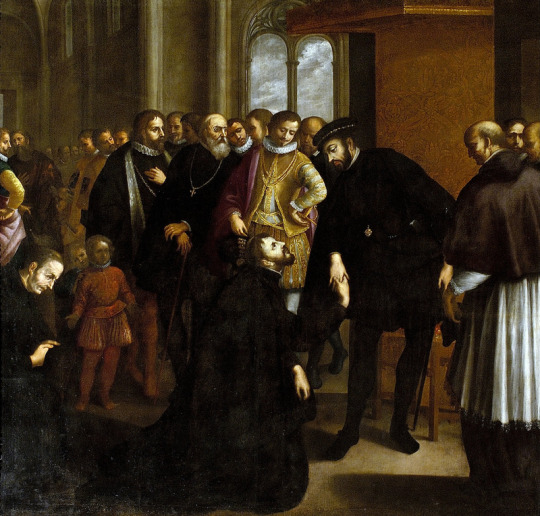
In order to follow its trade routes to the Far East, Portugal depended on the seasonal monsoon winds in the Indian Ocean. In winter, the prevailing northeasterly monsoon impeded travel to India; in summer, the southwest monsoon made departure from India difficult. As a result, Portugal determined that it needed permanent bases in India, in addition to its ports of call in Africa, to pass the time while the wind changed. In addition to Goa, they established themselves in Ceylon (in what is now Sri Lanka) through the conquest of several Ceylonese kingdoms in the sixteenth century. Portuguese Ceylon remained in Portuguese hands until 1658, when it was seized by the Dutch after an epic siege.
During the reign of King João III, the Portuguese Empire established itself in South America with the foundation of the twelve Captaincy Colonies of Brazil (from 1534 onwards). Each with its own donatary captain, the twelve colonies struggled independently. In 1549, João III established the Governorate General of Brazil, and the twelve captaincy colonies became subordinate to it. The first Governor-General appointed by João III, Tomé de Sousa, founded the city of Salvador, Bahia (São Salvador da Bahia de Todos os Santos) in 1549.
Immediately following the discovery of Brazil in 1500, the Portuguese imported brazilwood, Indian slaves and exotic birds from there. Brazilwood was a much appreciated product in Europe, because it could be used to produce a red dye. During João III's rule, after the initial colonization, Portuguese explorers intensified the search for brazilwood and began the cultivation of sugarcane, which was well suited to the climate of Brazil, especially around Recife and Bahía.
In the final years of João's reign, Portugal's colony of Brazil was just beginning its rapid development as a producer of sugar that compensated for the gradual decline of revenues from Asia, a development that would continue during the reign of his grandson and successor, Sebastião (1557–1578). Since Brazil lacked a large native population, and the Indians did not make good plantation workers, the Portuguese colonists began to import African slaves to work their plantations. The first slaves, from the region of Guinea, arrived in Brazil in 1539. Most of them worked in the sugarcane fields or served as house servants.
From 1539, the heir to the throne was João Manuel, Prince of Portugal,

who married Joana of Austria, Princess of Portugal,

daughter of Charles V. The sole son of João III to survive childhood, Prince João, was sickly and died young (of juvenile diabetes), eighteen days before his wife gave birth to Prince Sebastião on 20 January 1554. When João III died of apoplexy in 1557, his only heir was his three-year-old grandson, Sebastião. João III's body rests in the Monastery of Jerónimos in Lisbon, next to his wife.
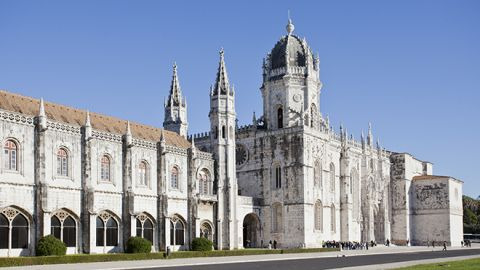

With his wife Catarina of Austria (married 10 February 1525) he had 9 nine children:
Prince Afonso (24 February 1526 - March 1526) Prince of Portugal (1526).
Princess Maria Manuela (15 October 1527 - 12 August 1545) Princess of Portugal (1527–1531). Princess consort of Asturias by marriage to King Philip II of Spain, then Prince of Asturias. She had one deformed child, Prince Carlos, and she died a few days after his birth.
Infanta Isabel (28 April 1529 - 28 April 1529)
Infanta Beatriz (15 February 1530 - 15 February 1530)
Prince Manuel (1 November 1531 - 14 April 1537) Prince of Portugal (1531–1537). Declared heir in 1535.
Prince Filipe (25 March 1533 - 29 April 1539) Prince of Portugal (1537–1539). Declared heir in 1537.
Infante Dinis (6 April 1535 - 1 January 1537)
Prince João Manuel (3 June 1537 - 2 January 1554) Prince of Portugal (1537–1554). Declared heir in 1539. Married Joana of Spain. Their son became King Sebastião I.
Infante António (9 March 1539 - 20 January 1540)
8 notes
·
View notes

